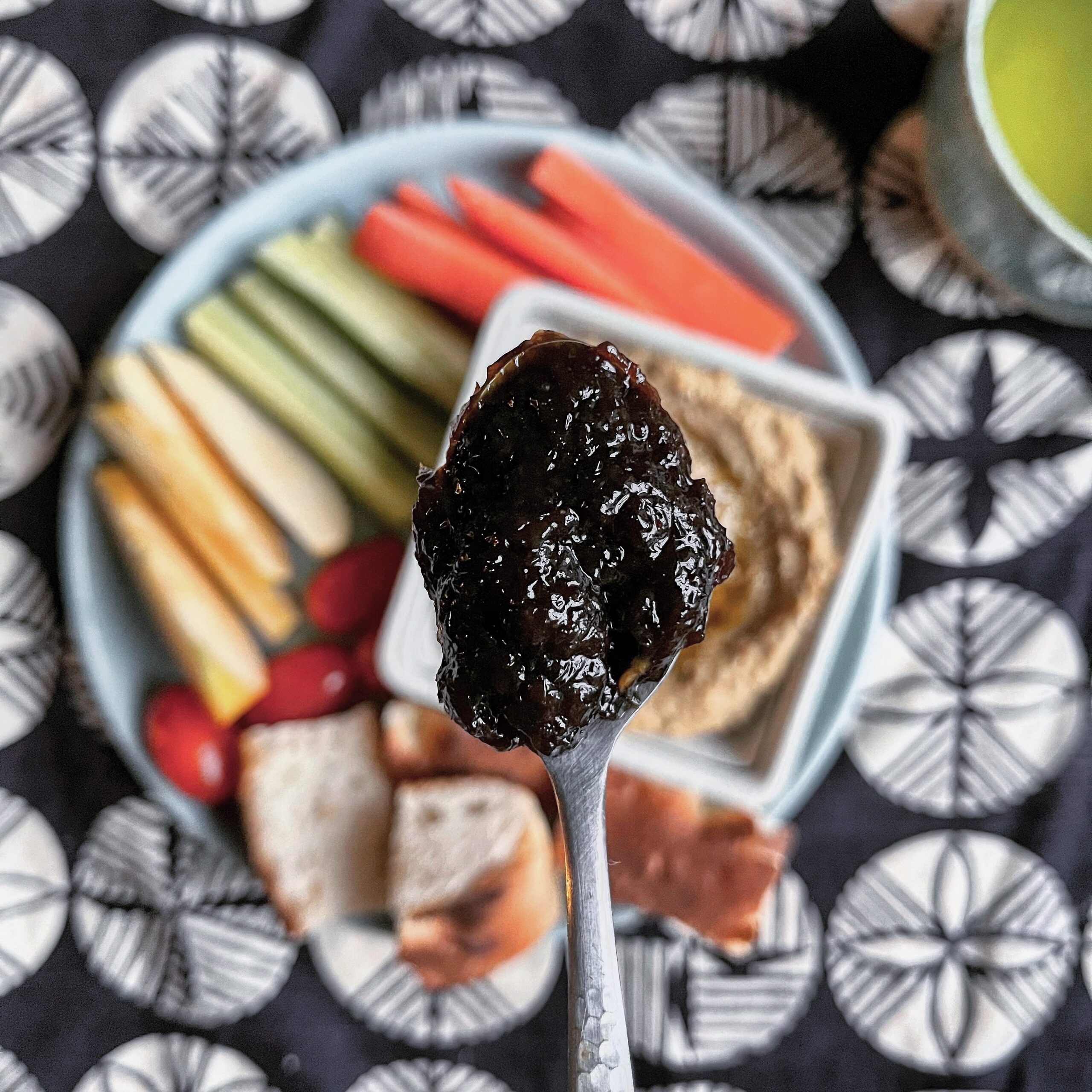My first time trying nori tsukudani paste—Japanese nori simmered in a sweet soy sauce mixture—was from Japanese school lunch during my first year living and teaching at 3 junior high schools in Japan.

Not gonna lie it was not well received the first time I tried it (topped over rice at the time). I had it from time to time after that, and it grew on me, but we remained distant friends. It also remained a given that I would probably never actually go out of my way to use it in my cooking.
It wasn’t until recently that I was given the opportunity to reconnect with the unique flavors offered by this ubiquitous Japanese condiment thanks to it being included in Kokoro Cares March Nourishing Essentials Care Package “Bento”.
I’m so glad it was because I would never have thought to conceive this nori tsukudani hummus! I also my Arab roots and yet another one of my most recent “bored at work” musings to thank for that. I had another taste and my brain suddenly said: hummus! The deep savory and almost molasses-like flavors of the nori paste—addicting umami bomb in its own right— paired so well! It reminded me a bit of adding pomegranate molasses, a common ingredient in Middle Eastern cuisine that is used in all kinds dishes and also used in dips or sometimes topped over hummus or baba ganoush.

Kokoro Cares delivers a variety of all-natural Japanese ingredients all over the world straight from Japan to your door. Their carefully selected locally-sourced products invite you to (re)connect with authentic Japanese flavors as well as the stories and traditions specific to the people and regions from which they come. The ingredients are all-natural and most are made using traditional methods that have been passed down from generation to generation–which means no additives (a big plus in my book).
I had so much fun cooking with and getting to know the rich histories and cultural traditions behind these unique ingredients. They did well to not only elevate the flavors in my bento but also infuse my cooking and eating experience with meaning. Get creative in the kitchen with premium quality Japanese ingredients by ordering from one of their collections or subscription care packages here.
Nori Tsukudani Paste

The deep savory and almost molasses-like flavors of Japanese nori paste—addicting umami bomb in its own right— pair especially well with this popular creamy Arab / Middle Eastern dip!
Ingredients
- 1.5 cup cooked chickpeas (or you can use canned)*
- 1 heaped tbs tahini
- 1 tbs lemon juice, plus more to taste
- Roasted garlic cloves, to taste (optional)
- Splash of chickpea cooking water if needed to loosen consistency
- 1 tbs EV olive oil, plus more to serve
- 1 -1.5 tbs nori tsukudani paste,
Directions
- To cook your own chickpeas: rinse and soak dried chickpeas in double the amount of water for at least 8 hours or until they’ve more than doubled in size. Add 1.5 cups of the soaked chickpeas and a pinch of baking soda to a pot. Bring to a boil, cover, and simmer the chickpeas till soft. If water runs dry during cooking, add more water as needed until chickpeas are fully cooked.
- Blend the tahini, lemon juice, cooked chickpeas, (garlic if using) and olive oil in a food processor or with a hand blender until smooth and well combined. Add the nori paste and adjust taste and consistency as desired. Top with more olive oil, za’atar (a Middle Eastern herb blend), toasted sesame seeds and more of the nori paste if desired. Serve with Arabic bread, cucumber, carrot, and apple slices, or spread over toast or use in sandwiches.
Notes:
- I recommend cooking your own chickpeas for the best results but canned chickpeas are fine in a pinch.
- Adding a pinch of baking soda to the chickpeas while they soak and boil helps them cook faster and yields a more creamy consistency.
- Make sure to cook the chickpeas thoroughly and that they are extra soft (over cooked is fine in this case)
- I don’t add garlic to this hummus so as to not overwhelm the flavors of the nori paste but you can add it if you like. If you use garlic, I recommend roasted garlic as a subtler and sweeter alternative to fresh.


